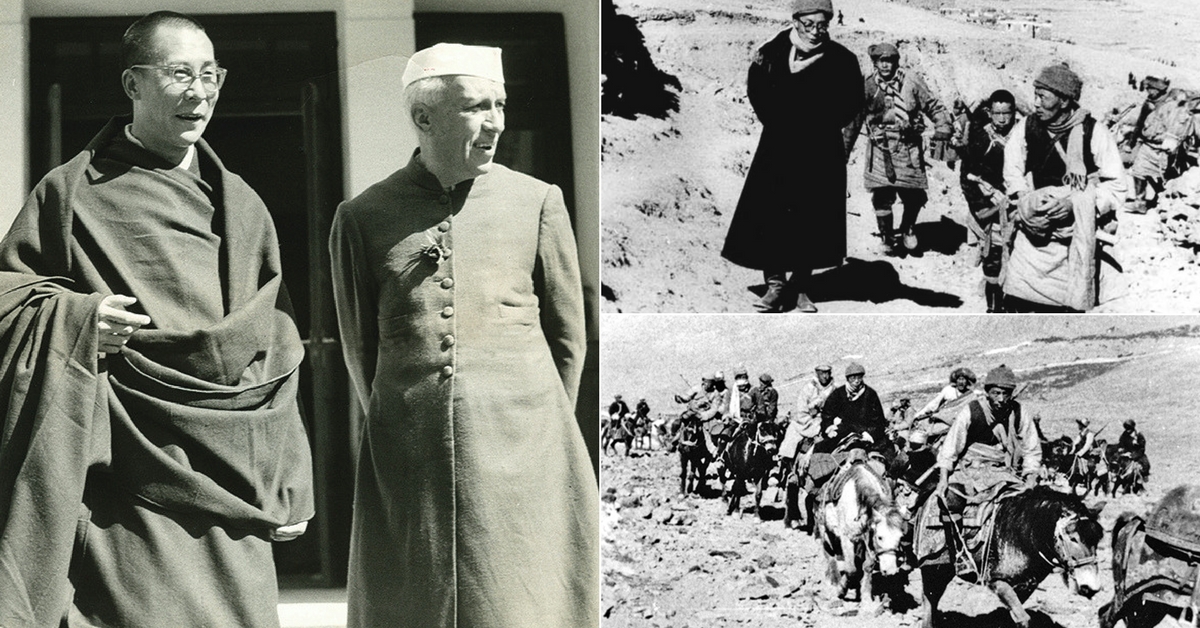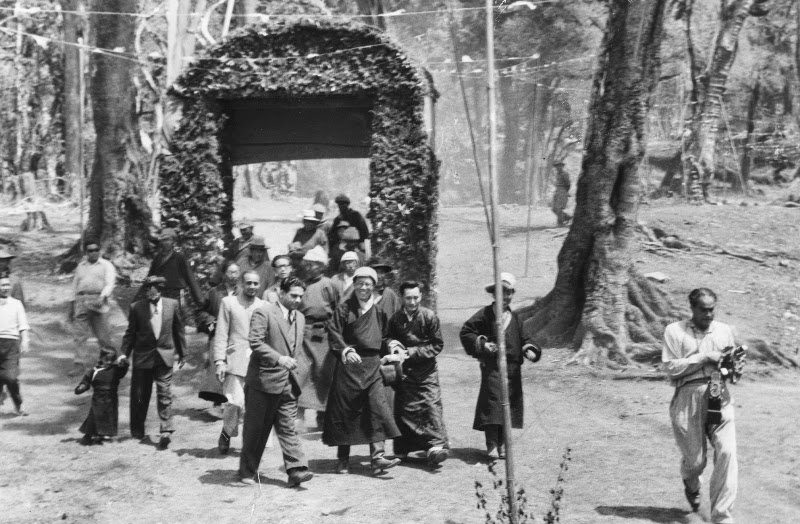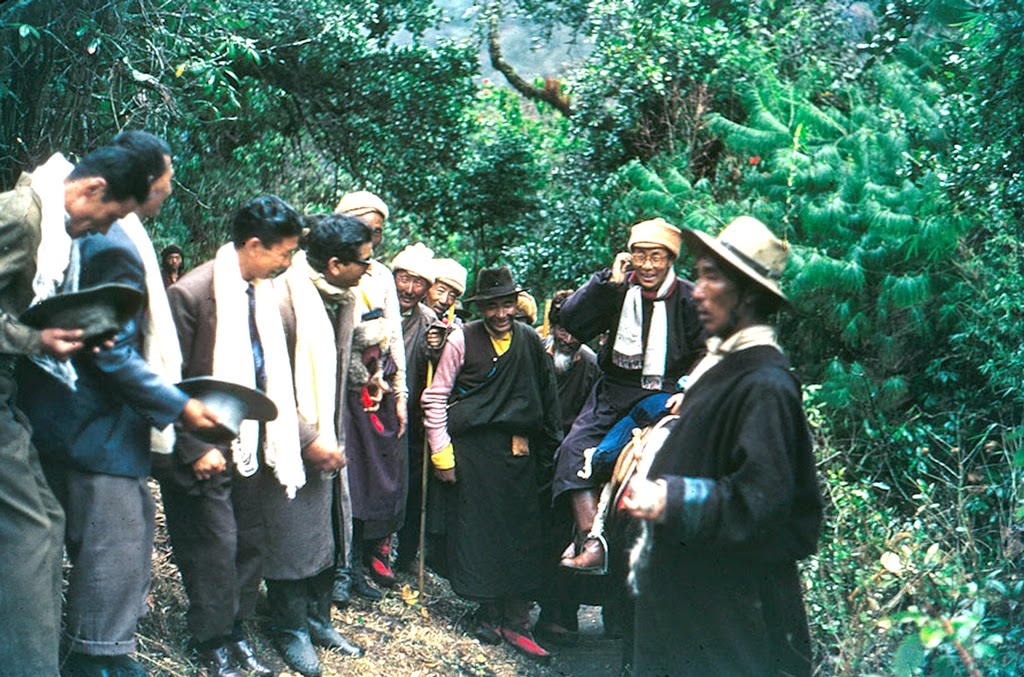Remembering An Epic Journey: How Dalai Lama Escaped Tibet in 1959
Here's the story of Dalai Lama's grueling two-week trek from Lhasa in Tibet to Tawang in India, by far the most dramatic visit by any foreign leader.

“Every time I visit these areas, the Tawang area, it is very emotional for me. I see the place where I had enjoyed freedom for the first time”, said Dalai Lama in April 2017 while on now on a visit to Assam and Arunachal Pradesh.
As can be seen from these words, the region clearly represent freedom for the spiritual head of Tibetans. The reason? These hills of northeast India were the place where the Dalai Lama first crossed over into India 58 years ago during his escape from virtual imprisonment in Lhasa.
Here’s the story of his epic journey from Tibet to India, a journey that took him across some of the most rugged terrain in the Himalayas.

The year was 1959 and guerrilla war had been raging for years between Tibetan rebels and the Chinese forces in Tibet, a land that China considered to be its territory.
On March 10, the Dalai Lama, received a seemingly innocuous invitation: Chinese general Zhang Chenwu asked if the 14th Dalai Lama would like to see a performance by a Chinese dance troupe. Soon after, he received a message asking him to come to the Chinese military headquarters without soldiers or armed bodyguards.
The Tibetans, who had already been suspicious of the sudden friendly overture, sensed a trap.
On the day of the performance, thousands of Tibetan protesters surrounded Norbulingka (part of Potala Palace, Dalai Lama’s residence in Lhasa) to keep their young leader from being abducted, arrested or killed.

As a cautionary measure, Dalai Lama’s closest advisers also asked him to escape from Tibet. Filled with despair, he eventually did.
On the night of March 17, 1959, Tibet’s 23-year-old spiritual and political head disguised himself as a soldier and quietly slipped through the crowds surrounding his summer palace in Lhasa, a place that he would never see again. Accompanying him were 20 of his officials (cabinet members and soldiers) and his family (his mother and younger siblings).
Thus began Dalai Lamai’s perilious journey to asylum. Traveling only at night to avoid detection by Chinese sentries, the group made their way across the arduous Himalayan region on foot, included a crossing the 500 yard wide Brahmaputra river.
During the day, they would hide in nondescript lamaseries, tiny villages and encampments of the native Khamba tribe.

For the next two weeks, there was no word of the Tibetan leader and people around the world feared that he had been killed. In Tibet, as per the 1959 cover story of the TIME magazine, rumours floated about that the Dalai Lama “had been screened off from the view of Chinese planes by mist and low clouds conjured up by the prayers of the Buddhist holy men.”
Meanwhile, back in Lhasa, the Chinese had imposed a curfew and nearly 2000 lives were lost in the ensuing battle between the locals and the Chinese forces. Soon after, close to 800 artillery shells were fired into Norbulingka. A day later, China dissolved the Tibetan governing body and announced the establishment of a Tibetan autonomous region within the People’s Republic of China.
By this time, furious Chinese troops were in hot pursuit of the escaping Tibetan leader. They had gradually started closing on him when on March 26, 1959, his fleeing caravan finally reached Lhuntse Dzong — a few days march from the McMahon Line, the border between India and Tibet.

From here, he sent an urgent letter to Jawahar Lal Nehru (the then-Indian Prime Minister) seeking refuge in India:
“Ever since Tibet went under the control of Red China and the Tibetan Government lost its powers in 1951, I, my Government officers and citizens have been trying to maintain peace in Tibet, but the Chinese Government has been gradually subduing the Tibetan Government.
In this critical situation we are entering India. I hope that you will please make necessary arrangements for us in the Indian territory. Confident of your kindness.”
Forewarned, the Indian government immediately took measures to welcome and ensure the protection of Dalai Lama and his party. PN Menon (who had served as India’s Consul General in Lhasa) was also sent along with Assistant Political Officer (APO) to Chuthangmu, a tiny Assam Rifles outpost near Tawang, to do the same.

In his autobiography ‘Freedom in Exile’, the Dalai Lama writes:
From Lhuntse Dzong we passed to the small village of Jhora and from there to the Karpo pass, the last before the border. Just as we were nearing the highest point of the track we received a bad shock. Out of nowhere, an aeroplane appeared and flew directly overhead. It passed quickly – too quickly for anyone to be able to see what markings it had – but not so fast that the people on board could have missed spotting us.
This was not a good sign. If it was Chinese, as it probably was, there was a good chance that they now knew where we were. With this information they could return to attack us from the air, against which we had no protection. Whatever the identity of the aircraft, it was a forceful reminder that I was not safe anywhere in Tibet. Any misgivings I had about going into exile vanished with this realisation: India was our only hope.
And so on March 31, 1959, the Dalai Lama fought his way through wind-whipped peaks and snow-covered plateaus to finally reach the homeland of the Buddha.

Clad in weather-beaten clothes yet instantly recognizable among the small entourage, the Tibetan leader was welcomed by Indian officials who handed him a telegram from the Indian Prime Minister:
“My colleagues and I welcome you and send greetings on your safe arrival in India. We shall be happy to afford the necessary facilities to you, your family and entourage to reside in India. The people of India, who hold you in great veneration, will no doubt accord their traditional respect to your personage. Kind regards to you. Nehru.”
Soon after, the Dalai Lama and his family were escorted to Tawang to rest and recuperate from the strains of the arduous journey. In his biography, he mentions that he was looked after very well by the family of Bomdila’s local District Commissioner.
A few weeks later, Dalai Lama travelled to Mussoorie in present day Uttarakhand, where he was by Nehru who formally welcomed him and offered him asylum. The two of them also discussed the future of the nearly 80000 Tibetan refugees who had followed their leader into exile.

Soon after, Dalai Lama established the Tibetan government-in-exile in Dharamsala (now known as Little Lhasa). For the Tibetans who had followed him, it was a bittersweet moment they would remember for a long time — they had escaped Chinese occupation but had also lost their beloved homeland.
The rest, as they say, is history. The Dalai Lama has since never gone back to Tibet and continues to be the centre of the Tibetan community, the person to whom the Tibetans look for guidance in practically all matters. Even today, visitors to Lhasa report that the residents turn south and bow to offer salutations to their revered leader.
Looking back at the journey this story is about, Dalai Lama’s gruelling two-week trek across the Himalayas to asylum in India has been by far the most dramatic visit by any foreign leader.
As Dalai Lama himself has often pointed out, he is the “longest guest of the Indian government.”

Interestingly, during his visit to northeast India in April 2017, 81-year-old Dalai Lama came face to face with 79-year-old Naren Chandra Dasan, an Indian soldier who had been a part of the team that escorted him to safety inside India. Thanking the former soldier for his assistance nearly 60 years ago, he said, “Looking at your face, I now realise I must be very old too.”
Also Read: ‘Mother of Tibet’ — Meet The Unsung Saviour of Thousands of Tibetan Children
Like this story? Or have something to share? Write to us: [email protected], or connect with us on Facebook and Twitter.
NEW: Click here to get positive news on WhatsApp!
This story made me
-
97
-
121
-
89
-
167
Tell Us More
We bring stories straight from the heart of India, to inspire millions and create a wave of impact. Our positive movement is growing bigger everyday, and we would love for you to join it.
Please contribute whatever you can, every little penny helps our team in bringing you more stories that support dreams and spread hope.



















